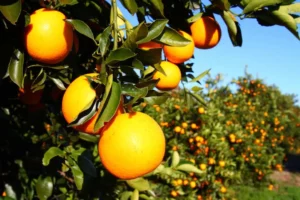This sharp increase is attributed to decreased harvests, a persistent issue with pest infestations, and heightened demand from international markets, particularly Asia and the Middle East.

According to André Braz from the Getulio Vargas Foundation, the price surge is also exacerbated by rising costs in pest control, harvesting, and transportation.
This disease, along with adverse effects from La Niña weather patterns, threatens to further disrupt production by altering rainfall and reducing yields.
In response to these challenges, some growers are relocating their operations to the state of Mato Grosso do Sul, a region still free from the greening disease.
Cutrale Group’s Strategic Investment
Cutrale Group leads by investing R$500M ($97M) in 5,000 hectares for new citrus groves, reshaping Brazil’s orange juice export market.
This relocation aims to secure future production away from the disease-afflicted zones of São Paulo, Minas Gerais, and Paraná.
Mato Grosso do Sul offers new hope with its ample land availability and disease-free status.
Jaime Verruck, Secretary of Environment, Development, Science, Technology, and Innovation, anticipates that this initiative could expand to 30,000 hectares.
This expansion has the potential to catalyze a new orange processing industry within the state.
This strategic realignment underscores the broader issues facing the Brazilian orange market, from disease management to adapting to climate variability.

